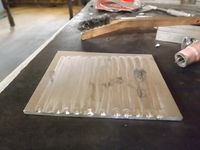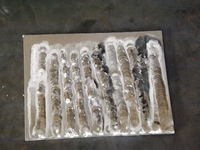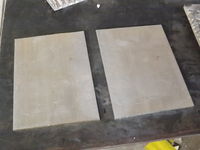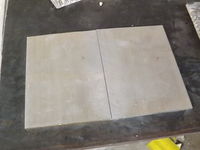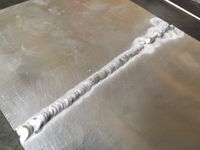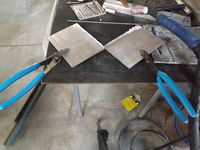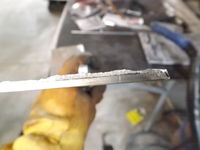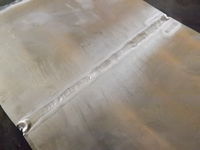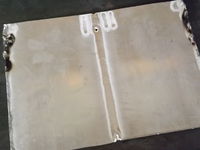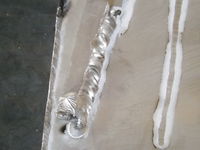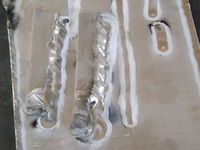How to TIG Weld
Basics
- TIG welding is an abreviation for Tungsten Inert Gas Welding
- It consists of a welding gun with a permanent tungsten electrode. This is connected to a sheild gas supply (Usually Argon), and an electricity supply. The user then creates an electric arc on the weld are and adds flux manually.
- It offers the highest precision, highest control, and a wide range of materials (Titanium Even!)
TIG Welder Setup
TIG Welding Aluminum
- Use pure argon gas. Between 5 and 10 litres/min should work. Check for leaks and tighten hose clamps if necessary.
- AC setting.
- Pulse off.
- AC frequency is between 100 and 125 Hz
- AC balance is 70% DCEN (if the knob has a - and + sign move the knob towards the - sign to increase DCEN and towards the + sign to increase DCEP; DCEN and DCEP mean direct current electrode negative and direct current electrode positive, and is a percentage measure of how long in a single AC cycle the tungsten is negative (gives electrons to the aluminum to heat the aluminum) or positive (takes electrons from the aluminum and heats the tungsten but cleans aluminum oxides off the aluminum)
- With 1/8" (2.4mm) aluminum, start with current at 60A and go from there.
- 3s preflow, 6s postflow, 5A start amps, 5A end amps, 0 up slope, 0 down slope
- 2% lanthanated tungsten, 3/32" (2.4mm) works well.
- Ground clamp is firmly attached to the aluminum or metal table with conductive pathway to the aluminum
Start with 1/8" (3mm) thick 6061 aluminum plate. Just weld some beads and gain experience making and sustaining a puddle as well. Be steady with the hand and keep the tungsten point as close as possible without touching the tip to the puddle. If the tip touches the puddle too much the tungsten will become contaminated- cut or grind off the tip and regrind to a sharp point.
Once you gain steadiness and puddle-mastery, move onto adding 4043 aluminum filler rod. Filler rod should come from the opposite direction of the welding. Make sure that the filler rod touches the front of the puddle- if it touches anywhere else you will get tungsten contamination (if you touch the tungsten) or get a big ball of aluminum filler (if you touch the hot aluminum near the weld) that is either useless or will cause contamination .
Now try some actual welds, starting off with a simple butt weld. Take 2 aluminum plates and fit them side by side. Try welding the gap with filler rod. If the current is too low you will just amass filler rod without any welding done on the plates. Increase the current and you will find that butt welding with filler becomes much easier. Use pliers to bend and break the 2 plates and examine your weld's penetration.
Try increasing the current so that you can butt weld without filler rod. With high current you might blow holes between the plates but just keep welding on.
Finally, try doing some fillet welds with filler rod- note that these welds need a lot of current because the puddle has a hard time gravity-filling the vertical-horizontal gap as opposed to the butt weld's horizontal-horizontal gap. Then go for fillet welds without filler rod (these need even higher current).
These are the core techniques that should be learned with varying aluminum shapes from square to round, orientations from offset to upside-down, and thicknesses from thin to thick. Eventually you will gain TIG welding aluminum mastery!
See Also
